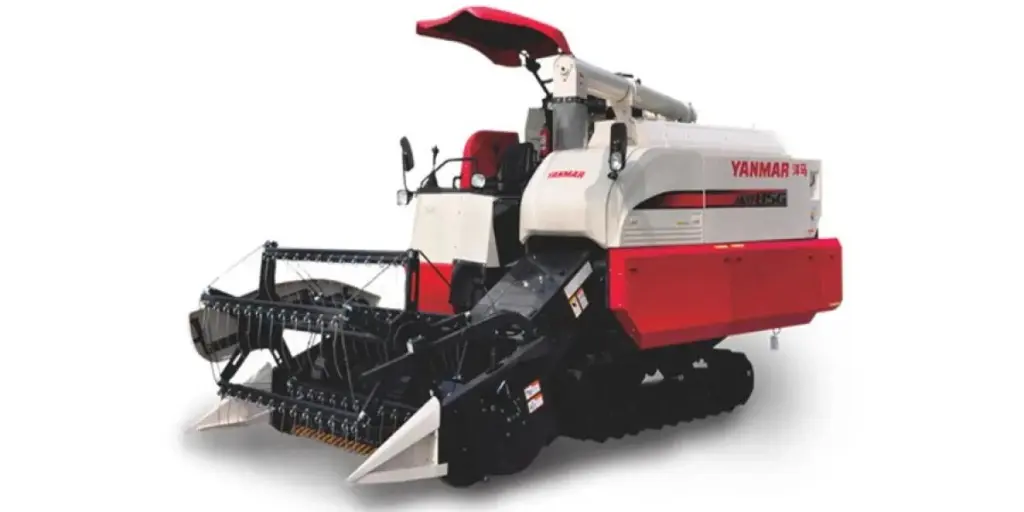Rice harvesters have gained popularity among farmers worldwide for their multitude of benefits. By streamlining the harvesting process, rice harvesters save valuable time and effort. Equipped with automated cutting, threshing, and collection features, they guarantee precise and superior crop quality. The market is teeming with various rice harvesters manufacturers, providing an extensive selection of models to cater to specific needs.
In this blog, we will look at the different types of rice harvesters available and provide guidance on how to buy the ideal machine for your business. Additionally, we will give an overview of the global rice harvester market.
Table of Contents
Agricultural harvester market
Types of rice harvesters
The ultimate guide to buying rice harvesters
Summary
Agricultural harvester market
According to Expert Market Research, as of 2022, the global agricultural market was valued at US $30.5 billion. This figure is expected to reach US $40.3 billion by the end of 2028, growing at a CAGR of 4.8%.
The increase in demand for rice harvesting machines is predominantly caused by labor shortages in many regions around the world as well as long-term cost savings, the improving quality and precision of the machines, technological advancements, and an overall increase in farm size.
Regions with a high demand for rice harvesting machines include Africa, Europe, Asia, North America, and South America.
Types of rice harvesters
1. Combine harvesters
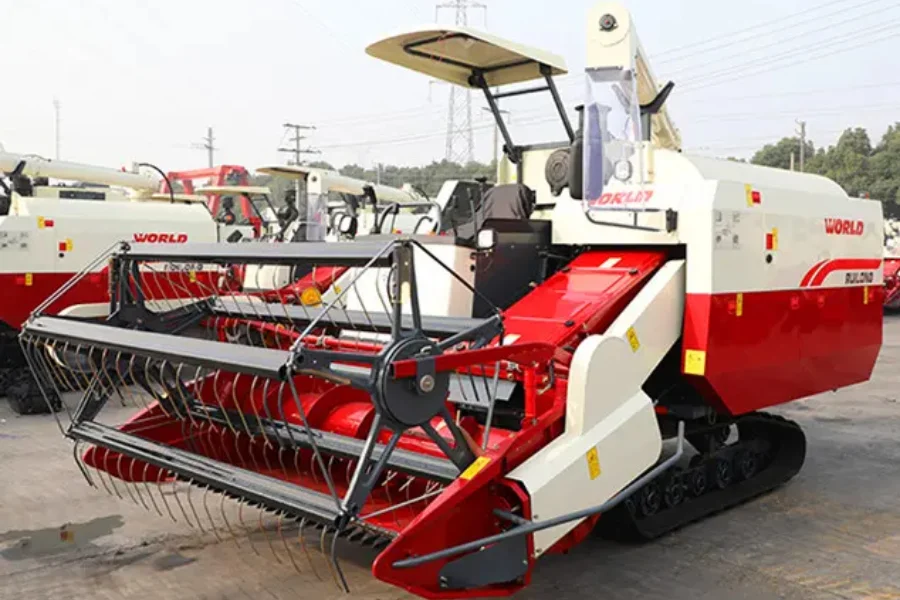
Combine harvesters, commonly referred to as combines, are incredibly versatile machines that perform various tasks during the rice harvesting process. They can efficiently handle cutting, threshing, and separating grains from the stalks, and are self-propelled, making them ideal for large-scale rice farming operations where productivity and efficiency are paramount. Combine harvesters can handle four to 12+ tons of rice per hour, with a cutting width of around four to six-plus meters.
2. Self-propelled harvesters
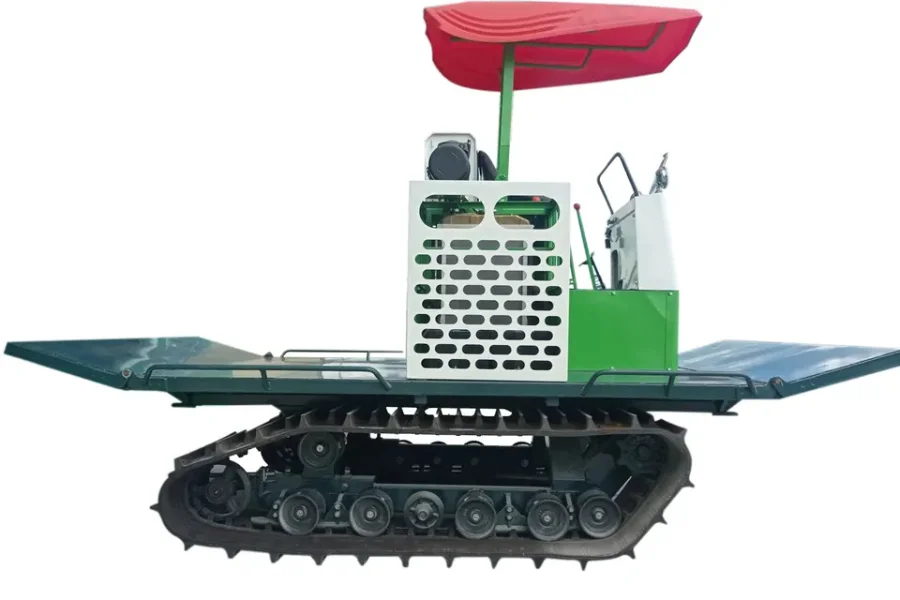
Self-propelled rice harvesters, equipped with their own engines or motors, are specifically engineered to be mobile and independent. These advanced machines are designed with cutting mechanisms that efficiently sever the rice stalks. Once the stalks are cut, the harvesters thresh and collect the grains. Smaller self-propelled harvesters can handle one to two tons per hour, while larger models manage six to eight tons. Cutting widths range from approximately two to four meters. The beauty of self-propelled harvesters lies in their ease of operation and adaptability to different field conditions.
3. Tractor-mounted harvesters
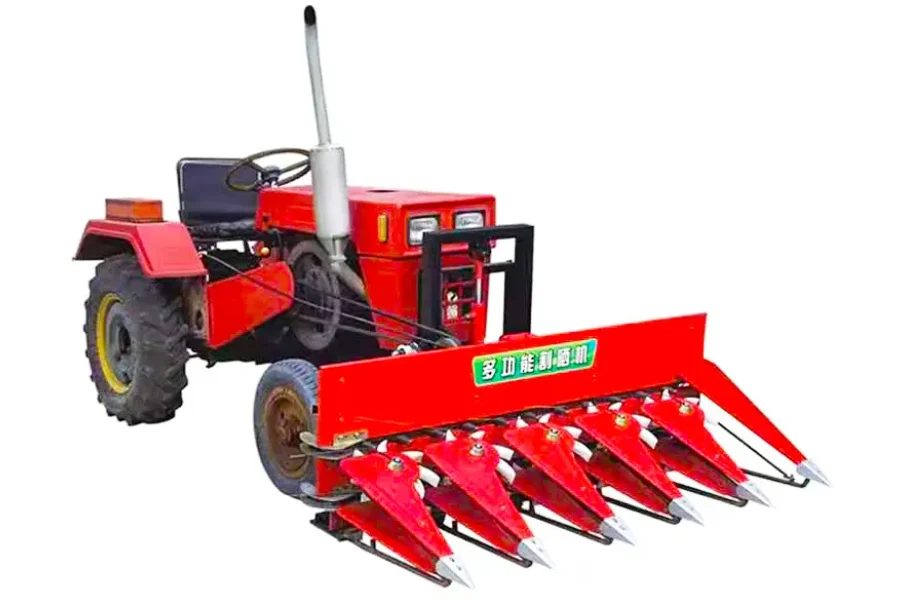
Tractor-mounted harvesters, as their name implies, are harvesters that are connected or affixed to tractors. They depend on the tractor’s power and mobility to traverse the fields and perform cutting and threshing operations. These rice harvesters are a practical choice for smaller farms or those already equipped with tractors, as they offer a cost-effective solution. Tractor-mounted harvesters have a capacity of one to four tons per hour, with a cutting width of one-and-a-half to three meters.
4. Walk-behind harvesters
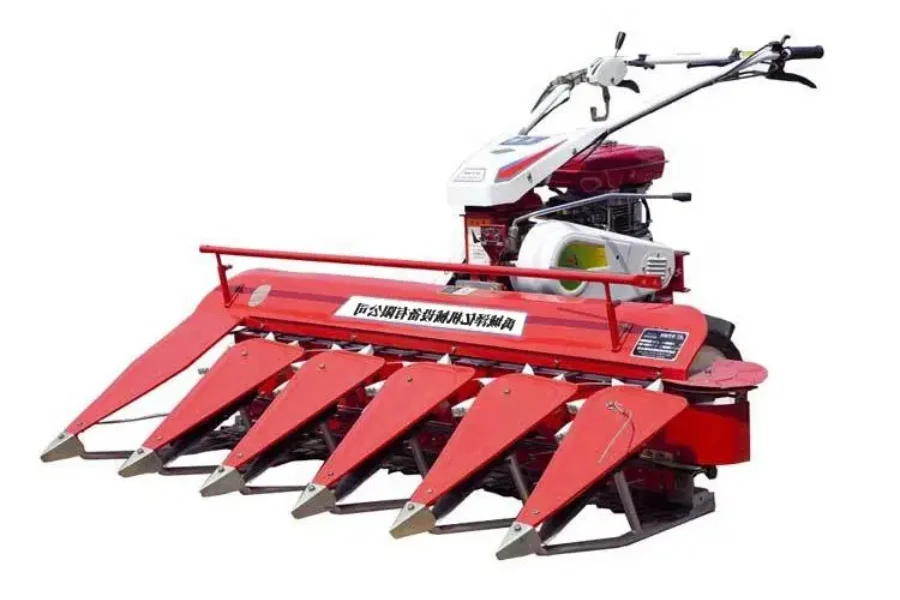
Walk-behind harvesters are compact machines that require manual operation. The operator pushes or guides the harvester while walking behind it. These harvesters are ideal for smaller rice fields or locations where larger machinery may not be practical. Walk-behind harvesters are generally more affordable and provide excellent maneuverability in tight spaces. The capacity of walk-behind harvesters can be around 0.2 to 0.5 tons per hour, and the cutting width is usually between 0.6 to 1 meters.
The ultimate guide to buying rice harvesters
1. Type
When you are in the market for a rice harvester, it is important to have a clear understanding of the various types available. There are different options to choose from, such as combine harvesters, self-propelled harvesters, tractor-mounted harvesters, and walk-behind harvesters. Carefully assess your farming requirements and field conditions to determine which type would be the most suitable and effective choice for your needs.
2. Size
Rice harvesters should be compatible with the size of the rice field they will be used for to ensure optimal performance. Typically, rice harvesters come in various sizes to accommodate different field dimensions. Smaller fields often require compact and agile harvesters, while larger fields can benefit from more substantial and efficient machines. Buyers should assess the size of fields and invest in harvesters that can navigate the terrain effectively.
3. Capacity
Capacity is the amount of rice a rice harvester can handle and process within a given timeframe. Choosing a machine with a suitable capacity ensures efficient and timely harvesting operations. The capacity of rice harvesters can vary widely, ranging from smaller models capable of handling around one to two tons per hour to larger, high-capacity machines that can process six to eight tons or more per hour. Matching the rice harvester’s capacity to a specific crop scale optimizes productivity.
4. Cutting width
The cutting width determines the width that a rice harvester can cut through the rice crop during harvesting. While a wider cutting width allows for faster harvesting, it may pose challenges in fields with narrow passages or obstructions. The cutting width of a rice harvester varies, ranging from narrower models with a width of around one-and-a-half to two-and-a-half meters, to wider ones reaching four to six meters or more.
5. Engine power
Engine power plays a crucial role in determining a rice harvester’s ability to handle different field conditions. Consider your power requirements based on the size of your fields, crop density, and whether it includes any challenging terrain. The engine power of rice harvesters can vary significantly, with smaller models typically ranging from 20-40 horsepower (HP) and larger, more powerful machines reaching 100-150 HP or more.
6. Fuel efficiency
Opting for rice harvesters with good fuel efficiency optimizes fuel consumption and reduces operational costs. A rice harvester’s average consumption rate ranges from five to eight liters per hour in smaller models and eight to 15 liters per hour for larger, high-capacity machines. Selecting a fuel-efficient rice harvester not only saves on fuel expenses but also contributes to a more sustainable approach to rice farming.
7. Price
Finally, you must assess the overall value provided by the rice harvester, considering factors such as features, quality, and reliability. Striking a balance between cost and quality is advisable so as to make a wise investment.
The price range for rice harvesters varies significantly, with smaller models priced around US $10,000 to US $20,000, while larger, high-capacity machines can range from US $50,000 to US $100,000 or more. By carefully considering the features and benefits offered within your budget, you can make a well-informed decision and find a rice harvester that meets your specific needs.
Summary
Buying the right rice harvester is essential for your business. There are many factors that you must consider when purchasing rice harvesters, including price, fuel efficiency, capacity, cutting width, and motor power. Visit Alibaba.com today to find the perfect rice harvester for your needs.
